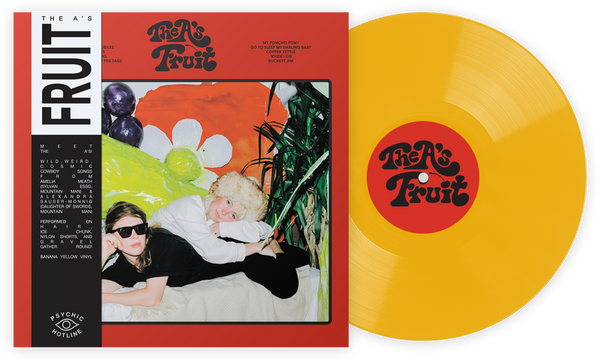Stan Twitter: Memeriksa sifat empowering dan toksik dari fandom online
Twitter mungkin adalah platform media sosial yang paling interaktif—hampir semua orang yang berada di sorotan memiliki akun Twitter. Dari penghibur seperti Cardi B hingga tokoh politik seperti Donald Trump, aplikasi burung ini telah menjadi ladang terbuka di mana publik dapat berinteraksi bebas dengan personalitas yang tidak akan mereka akses dalam kehidupan nyata. Tidak seperti Instagram dan Facebook, Twitter adalah saluran tercepat untuk berbagi informasi dan mendapatkan umpan balik. Ini telah membuat hubungan antara penggemar dan selebriti sangat manis. Dalam komunitas yang dipenuhi dengan banyak niche, “stan Twitter” menjadi tuan rumah bagi kelompok pengguna yang paling vokal, agresif, penuh semangat, dan dominan. Mayoritas anggotanya adalah penggemar berbagai bentuk hiburan — terutama musik. Bagi para seniman, dukungan dari geng online yang berdedikasi berarti lebih dari sekadar citra yang baik dan eksposur. Mereka adalah kekuatan PR rahasia yang dapat meningkatkan angka streaming, tayangan, dan interaksi.
Fan boys and girls have been promotional instruments behind the success of many musicians. This is perhaps one of the best things they offer to the artists they support. However, the effect of this extends beyond simply showing support. They have helped introduce new artists to the world and highlight the talent of others through shared content. In 2018, we witnessed the come up of Doja Cat, the come back of Tyga and the takeover of “Sicko Mode,” “Mo Bamba” and “Thank U, Next,” all largely through the influence of music fans on Twitter. And so far this year, stan Twitter has functioned as a publicity tool for Cardi B, J. Cole, Iyla, Blueface, Megan Thee Stallion and Lana Del Rey, among others. Cole’s recent single, “Middle Child,” received a treatment of the popular Spongebob clip, and it fits just as perfect as the first time the meme format was tested on Travis Scott’s “Sicko Mode.” Clips like this register in the subconscious of viewers and prompt many to replay the song.
The internet stays undefeated 😂💀... @JColeNC @KingOfQueenz pic.twitter.com/tHBCgpjGy5
— Dreamville Memes (@DreamvilleMemes) January 24, 2019
R&B singer Iyla’s digital streams and views shot up in real-time through a platinum Tweet that helped kill two birds with one stone. First, the user accentuated her talent by showcasing parts of the visuals for “Juice” (which is her most viewed video to date), and then went ahead to share a Spotify link of her EP in the thread. The thirst for more music from the singer, (who was unknown to many prior to the tweet) was so intense that the fan behind the Tweet got tired of answering the question “Who is she?”
pop stans hyping the wrong white girl up. Ava max who? pic.twitter.com/g2WRblhyye
— tyanna (@yoncesgalore) January 25, 2019
It’s hard to trace the rise of Blueface or how he got us all bussing down to Thotiana, but its videos like this that slowly hypnotized the world.
Bust down Thotiana pic.twitter.com/EEtJBDGjdM
— wumbus (@ZacharyMitzel) February 15, 2019
Cardi B has been on a roll in the past 2 years. When she’s not stylishly slaying the red carpet, she’s receiving multiple awards and when she’s not spitting bars on her own record, she’s making jaw-dropping guest appearances on songs like City Girls’ “Twerk” and the remix of Blueface’s “Thotiana.” Even simple Tweets like this one that showcase her talent as a rapper and performer have unofficially reassured many that indeed, the Grammy winner isn’t going anywhere anytime soon.
CARDI SNAPPED. pic.twitter.com/y3pbhfqyAB
— ً (@hosthetic) February 16, 2019
When it’s not captions doing the job, it’s original and shared content boosting the image of entertainers. As empowering as this might seem, it comes at a price. Twitter is a double-edged sword. When these fandom members aren’t praising those they like, they are mercilessly attacking artists they do not like, as well as their fans. This creates a negative perception of what ordinarily should be a reflection of the love and passion that comes with fandom. Every member of stan Twitter is like Spider-Man. They hide behind a mask that is the profile pictures of celebrities or memes and similar to Spider-Man, they will do anything for the entertainers they love just like Spidey would do for Aunt May and Mary Jane. On one hand, their actions can elicit “Awwws” and admiration. However, when they sense the success of personalities they do not like, or when their faves face criticisms, they put on their black suit. Even when those they support are in the wrong, they protect them with a wall of poisonous smoke and attack those who come for them. They become a danger to the internet by sending death threats, fishing out personal information, bullying, and shamelessly showing negative characteristics of a fan base. Some of the well-known masters of notorious online acts are fans of Nicki Minaj, Ariana Grande, Selena Gomez and Justin Bieber.
A wise character once said, “With great power comes great responsibility.” There is no doubt about the fact that people who run fan accounts have built a strong network of people within the same space and can do great things for musicians, especially catapulting an unknown brand into media spotlight. Notwithstanding, fandoms also have the power to create adverse movements, which is why they are ever-confident in being digital barbarians. Last year, Saturday Night Live cast member Pete Davidson posted a note on Instagram suggesting he was suicidal, and while many showed support to him through kind words, a group of abusive pop culture enthusiasts sent messages through Tweets urging him to kill himself. Many who responded to Davidson with ill-wishes were fans of Ariana Grande.
We’ve also witnessed fans of Nicki Minaj displaying features typically attributed to stalkers, psychopaths, bullies and murderers over things that — most of the time — involve their idol embarrassing herself on the internet. Of the numerous examples, the incident between Stefflon Don and the Barbz remains unforgettable. During their explosive back-and-forth on social media, Nicki boasted that her friend Rah Ali beat up Cardi during their infamous fight at New York Fashion Week. This prompted the U.K. rapper to express her disappointment in the comment section. In response to Minaj, she said: “Ur a big grown woman talking about beating someone’s head in??? Queen??? I’m disappointed in you so many people look up to you, show us better.” This was apparently enough reason for fans to drag the rapper using her looks, career and ethnicity as subjects of insult.
Stefflon Don literally looks like a poor and fat Nicki Minaj while she talking shit. Nobody even listens to you.
— 𝘾𝙝𝙧𝙞𝙨 (@Chrimye) October 31, 2018
Stefflon Don is just mad because Nicki bringing these UK rappers on tour but not her. 😩😂 pic.twitter.com/o3h7fLzzxL
— Nicki Minaj News (@NickiReignsCom) October 31, 2018
I’m so happy, I’ve been waiting for the day that the Barbz place their foot on Stefflon Don’s Water Buffalo built ass neck. She’s always sneak dissing Nicki thinking she’s low.
— 𝘽𝙖𝙧𝙗𝙞𝙚 (@minajthewave) October 31, 2018
It’s undeniable that stan Twitter’s changed the landscape of fan communities and music sharing. While Twitter can be a place to demonstrate love and appreciation, fan armies can (and have) also turn themselves into weapons of harassment and intimidation that threaten to undermine all that love and inclusion. True, a sense of entitlement accompanies modern fan culture. Fans invest their love in celebrities and then become stockholders who long for returns through likes, retweets, replies and follows. But this has gotten many people lost in worlds they know nothing of, people they know little about and events beyond their control. Trying to decide if the good characters of hard core music junkies outweighs the bad is nearly impossible, as artists and labels have given testimonies on the influence of online support in their revenue. However, there has also been a vital conversation on the internet criticizing fandoms and labeling their movements as toxic, harmful and dangerous. The content we devour shapes us, in both good and bad ways. In the case of fan culture, filtering negative energy from the positive is the best way to participate and enjoy. You can either be on the collectively empowering side of the community or a subset of collective haters.
Tommy Monroe is a TV producer by day and does bits in the music industry at night. Other than eating, sleeping, and breathing music, writing is another tool he uses to express his love for music.
Bergabung dengan Klub!
Bergabunglah sekarang, mulai dari 44 $Exclusive 15% Off for Teachers, Students, Military members, Healthcare professionals & First Responders - Get Verified!












